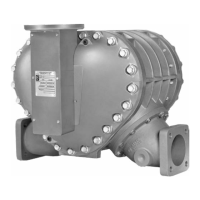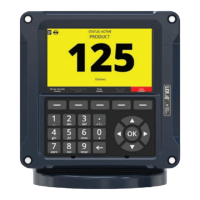M & MA Series Meters
15
Get the latest PDF manual:
https://www.lcmeter.com/resources/technical/manuals
Mobile/online version of this manual:
https://www.lcmeter.com/manuals
- Chapter 4 - Proving Systems
- Chapter 5 - Metering
- Chapter 6 - Metering Assemblies
- Chapter 11 Section 2.3 - Water Calibration of Volumetric Provers
- Chapter 12 Section 2 - Calculation of Petroleum Quantities
·
PROVIDE A MEANS OF CONVENIENTLY DIVERTING LIQUID FOR CALIBRATION
PURPOSES
·
EVALUATE PUMPING EQUIPMENT – Give careful attention to the pumping equipment
and piping in your system. Because of their influence on liquid being measured as it enters
the metering assembly, systems should be made free of conditions that cause or
introduce entrained air or vapor.
·
FOLLOW THE MANUFACTURER’S RECOMMENDATION FULLY WHEN INSTALLING
PUMPS – Give particular attention to factors like: use of foot valves, pipe size to the inlet,
and conformance to net positive suction head (NPSH) conditions when suction pumping is
required. Follow manufacturer recommendations to minimize air and vapor elimination
problems.
·
LIGHT HYDROCARBONS AND SIMILAR LIQUIDS – For liquids such as light
hydrocarbons that tend to flash or vaporize easily at higher ambient temperatures, it is
advantageous to use flooded suctions and piping sized larger than the nominal pump size.
·
VEHICLE TANK INSTALLATIONS – On vehicle tank installations, the layout of the
system’s piping is crucial in preventing problems with split compartment test conformance.
Piping should slope away from a positive displacement pump to prevent resurgent re-
priming of the pump due to drain back.
·
AVOID HYDRAULIC SHOCK – Hydraulic shock is harmful to all the components of an
operating system, including the valves, the meter, and the pump. Because of the high
precision with which they measure products, meters, in particular, must be protected
against hydraulic shock. The best protection against hydraulic shock is to prevent it from
occurring. To prevent hydraulic shock, adjust the closing rate of the valve until shock does
not occur.
·
AVOID THERMAL EXPANSION – Thermal expansion, like hydraulic shock, can easily
damage meters and other components in the system. When designing the system, include
pressure relief valves in any portion or branch of the system that might be closed off when
an operating or block valve is closed.

